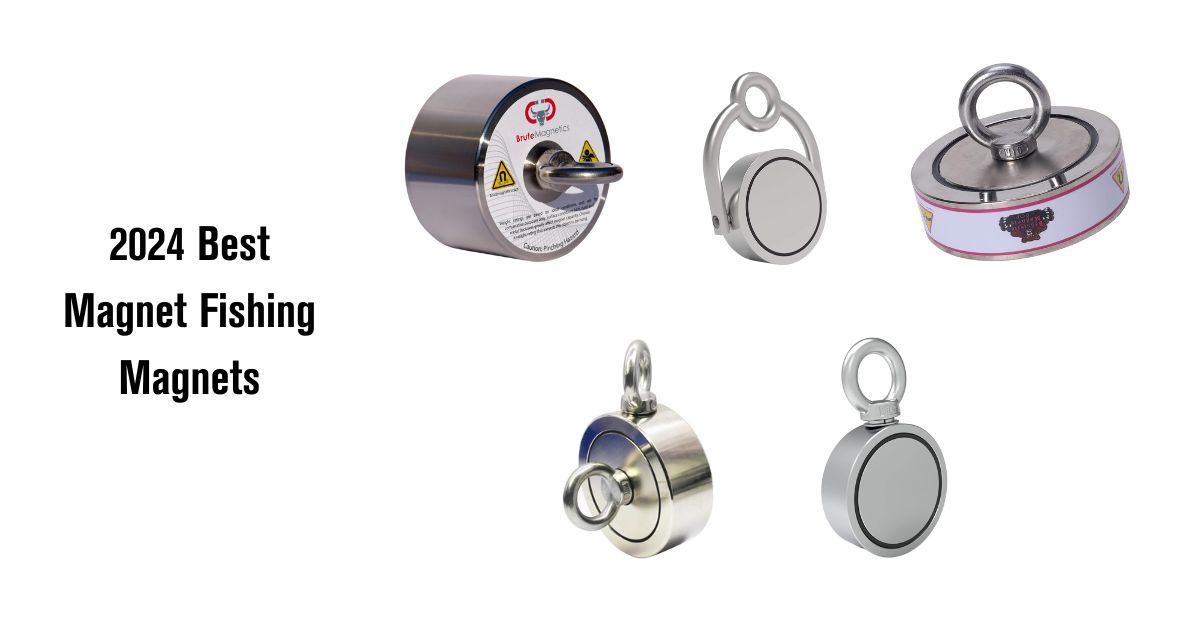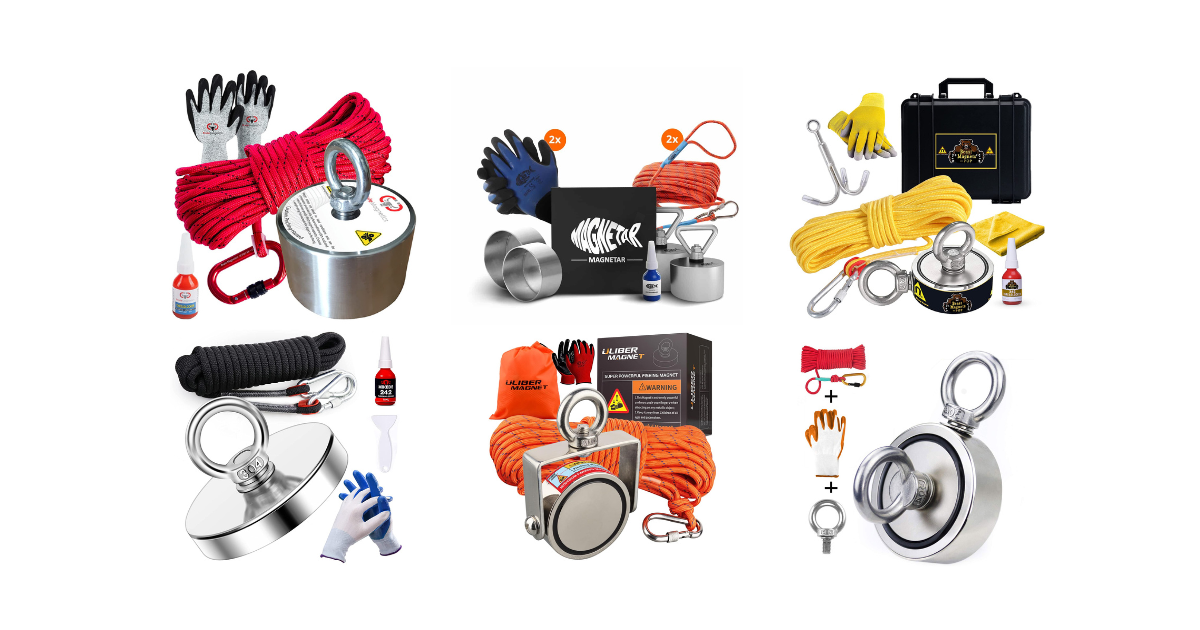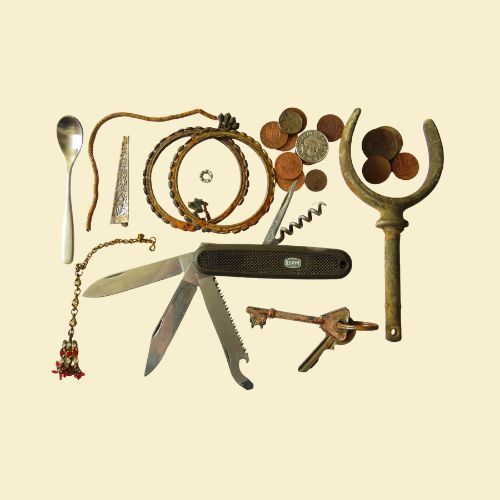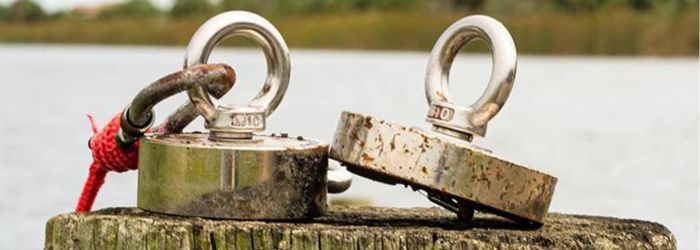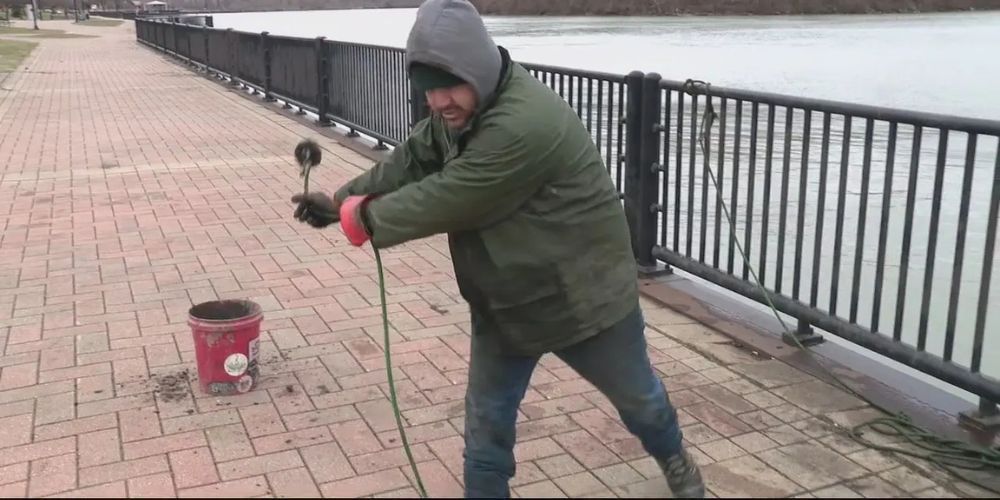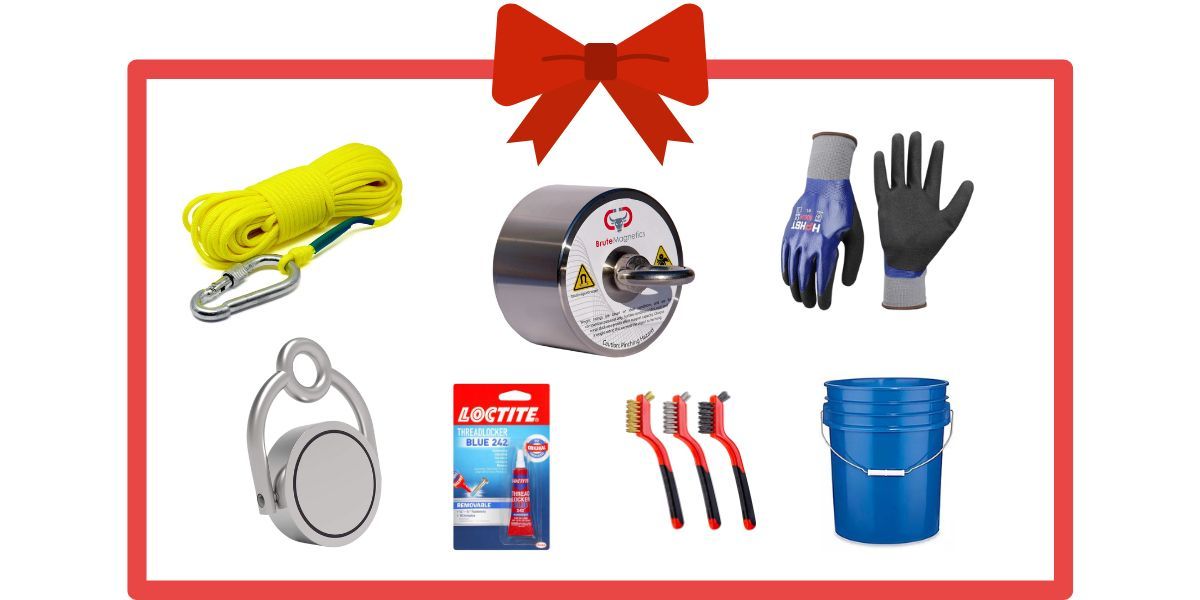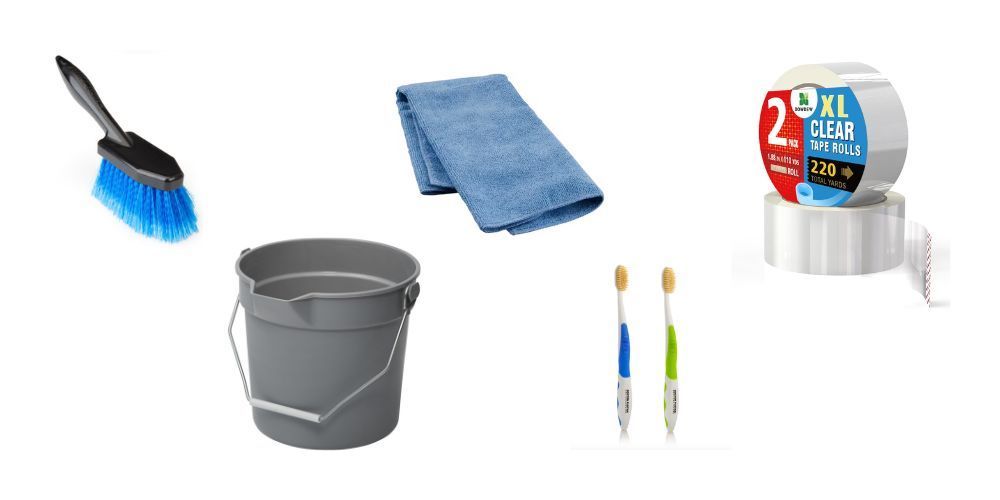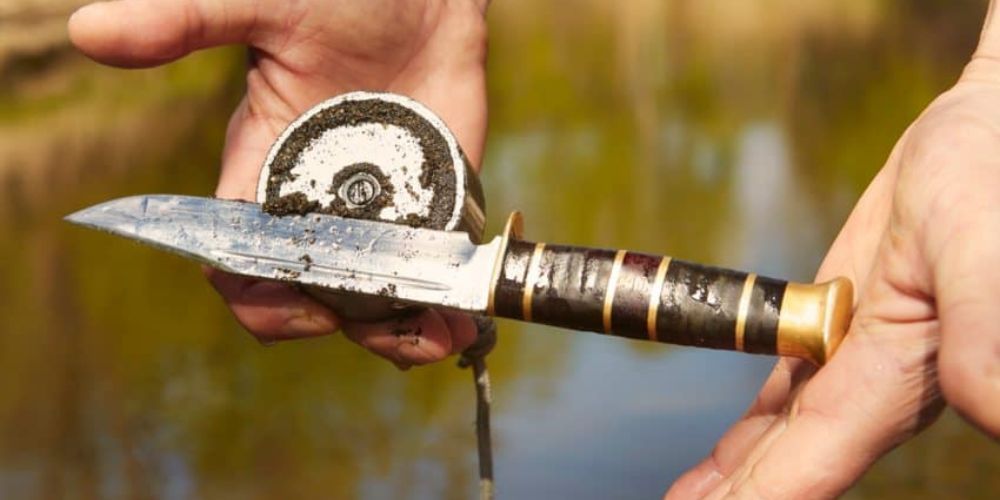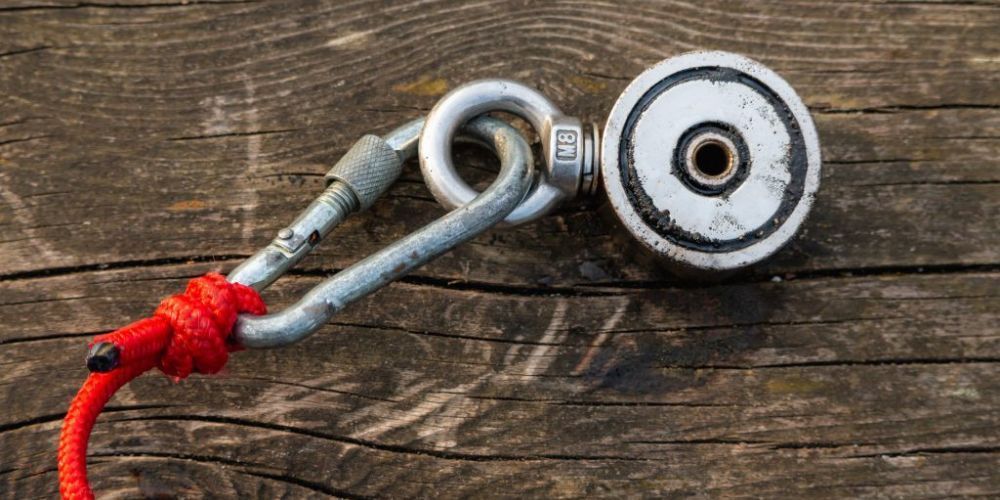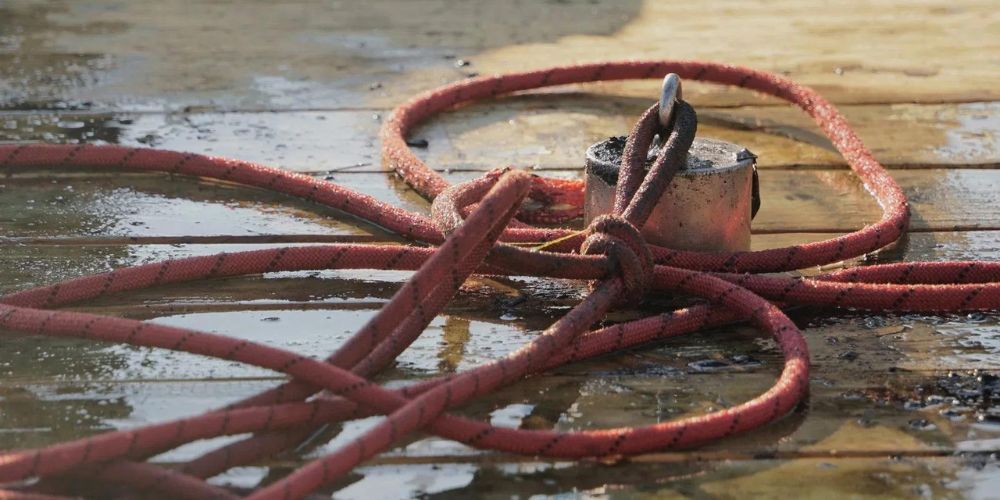The Magnet Fisher's Guide to Rust Removal
Expert Advice on Cleaning and Caring for Magnet Fishing Finds
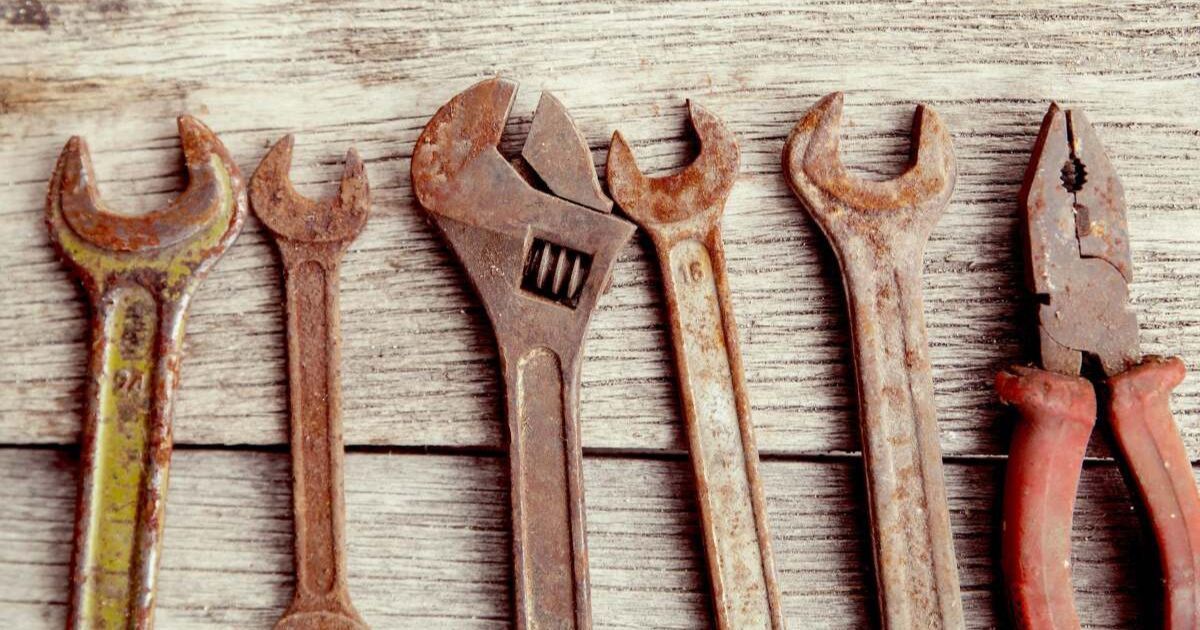
Magnet fishing is an exciting hobby that often leads to the discovery of various metal objects, some of which may be valuable or historically significant. However, these finds are frequently covered in rust, obscuring their true nature and value. Understanding how to effectively clean rust off your magnet fishing finds is crucial for both preserving these items and unveiling their potential worth. It is also important to properly dispose of those items you find that may not be treasures worth cleaning.
Natural Cleaning Methods
There are several natural methods for cleaning rust, each with its own advantages. These methods are often preferred for their environmental friendliness and safety. Here are some natural rust removal techniques along with their advantages.
Black Tea
The tannic acid in black tea can help to convert rust into a more stable form, making it easier to scrub off. This method is gentle and non-toxic, making it safe for use on a variety of surfaces.
Potato and Baking Soda or Salt
Potatoes contain oxalic acid, which is effective at breaking down rust. When combined with baking soda or salt, the mixture becomes a mild abrasive, providing an eco-friendly and non-toxic way to remove rust.
Molasses Solution
When mixed with water, molasses creates a solution that can dissolve rust over time. It's an excellent, gentle method for heavily rusted items, though it requires patience as the process can take several days.
White Vinegar and Baking Soda
Vinegar acts as a natural acid to dissolve rust, while baking soda serves as a gentle abrasive. This combination is safe, easily available, and effective for small to medium-sized items.
Lemon or Lime Juice and Salt
Citric acid in lemon or lime juice helps to dissolve rust, while salt acts as an abrasive. This method is particularly effective for items with light to moderate rust and is safe for food-grade items.
Banana Peels
The oils and enzymes in banana peels can help to dissolve rust. This method is very gentle, making it suitable for delicate surfaces.
Cream of Tartar and Hydrogen Peroxide
This mixture creates a paste that can be effective at removing rust. Cream of tartar acts as a buffering agent while hydrogen peroxide acts as a mild oxidizer. This combination is non-toxic and environmentally friendly.
Soap Nuts
Soap nuts, which contain natural saponins, can be used to create a cleaning solution that helps to loosen and remove rust. This method is completely natural, biodegradable, and gentle on the skin.
Salt and Lemon Scrub
The abrasive nature of salt, combined with the acidic properties of lemon, makes for an effective rust remover. It's especially good for rust stains on fabrics or less durable materials.
Borax and Lemon Juice
This combination can form a paste that effectively removes rust. Borax acts as a natural cleaner while the citric acid in lemon juice helps break down the rust.
These natural methods are not only environmentally friendly but also generally safer for home use, especially around children and pets. They are best suited for light to moderate rust and can be a good alternative when you want to avoid harsh chemicals. However, they may require more time and elbow grease compared to chemical methods.
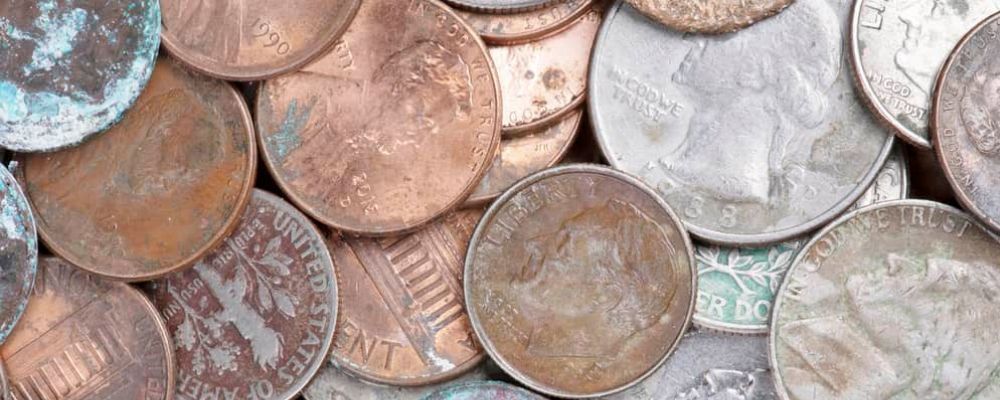
Chemical Solutions
When it comes to cleaning rust off magnet fishing finds, there are several specific chemical products that are known for their effectiveness. These products are designed to tackle rust with varying degrees of strength and application methods. Here are some notable options:
Naval Jelly Rust Dissolver
This product is specifically formulated to remove rust from metal surfaces. It's a phosphoric acid-based gel that clings to the surface, allowing it to work on vertical surfaces and hard-to-reach areas. Buy on Amazon.
How to use:
- Apply the jelly liberally on the rusted area.
- Allow it to sit for 5 to 10 minutes (for heavy rust, up to 15 minutes).
- Scrub the area with a brush or abrasive pad if necessary.
- Rinse thoroughly with water and dry.
- Repeat if necessary and protect the metal from further rust with paint or a protective coating.
Evapo-Rust
A popular, non-toxic rust remover, Evapo-Rust is effective at removing rust without the need for scrubbing. It's safe on skin and doesn't emit harmful fumes, making it a user-friendly option. Buy on Amazon.
How to use:
- Immerse the rusted object completely in Evapo-Rust.
- Leave the object in the solution for 1 to 12 hours depending on the rust severity.
- Check periodically. Once rust is removed, take the object out.
- Rinse the object with water.
- The solution is reusable, so store it for future use.
WD-40 Specialist Rust Remover Soak
Designed for extensive rust removal, this product is ideal for soaking and removing rust from metal parts. It's non-toxic and biodegradable, which adds to its appeal. Buy on Amazon.
How to use:
- Place the rusted item into a container and pour enough WD-40 Rust Remover Soak to cover it completely.
- Allow it to soak for at least 30 minutes. For heavy rust, it may need to soak overnight.
- Remove the item and scrub with a brush if necessary.
- Rinse with water and dry the item.
Rust-Oleum Rust Dissolver
This is a spray-on formula that clings to metal surfaces to dissolve rust quickly. It's ideal for items with intricate designs or hard-to-reach areas. Buy on Amazon.
How to use:
- Spray directly onto the rusted surface.
- Leave it for 10-30 minutes (check the progress).
- Scrub if needed with a brush or abrasive pad.
- Rinse the surface with water and dry it off.
CLR Calcium, Lime, and Rust Remover
While not exclusively a rust remover, CLR is effective at dissolving rust, calcium, and lime deposits. It's often used for smaller items or where there's also mineral buildup. Buy on Amazon.
How to use:
- Apply directly to the rust-stained area.
- Let it sit for 2 minutes (not more than 5 minutes).
- Rinse promptly with cold water.
- Dry the area completely after rinsing.
Iron OUT Rust Stain Remover
This powerful solution is designed to remove rust stains from various surfaces. It's often used for more stubborn rust or where there's a need to treat larger surface areas. Buy on Amazon.
How to use:
- Apply the solution to the rust-stained area.
- Allow it to sit for a few minutes.
- Scrub with a brush if the rust is heavy.
- Rinse thoroughly with water and dry.
Loctite Extend Rust Neutralizer
A chemical treatment that converts rust to a neutral black surface, which can be painted over. It's suitable for objects with surface rust that you plan to repaint. Buy on Amazon.
How to use:
- Remove loose rust with a wire brush.
- Apply the product onto the rusted area and ensure it's fully covered.
- Allow it to dry for 20-30 minutes.
- A second coat may be applied for heavy rust.
- Once dry, it can be primed and painted.
The Must for Rust by Krud Kutter
This product not only dissolves rust but also prevents its return. It's a good choice for items that you want to clean and protect for the longer term. Buy on Amazon.
How to use:
- Spray or brush the product onto the rusted surface.
- Allow it to penetrate for a few minutes.
- Wipe the surface with a clean cloth or rinse with water.
- For heavy rust, a second application may be necessary.
Whink Rust Stain Remover
Known for its effectiveness on tough rust stains, Whink is particularly useful for small items with significant rust. Buy on Amazon.
How to use:
- Apply the remover to the rusted area.
- Let it sit for a few minutes.
- Rinse the area thoroughly with water.
- Repeat if necessary, especially for stubborn rust.
Hammerite Kurust
This transforms rust into a stable surface in minutes, providing a paintable area after application. It's great for quick touch-ups and smaller projects. Buy on Amazon.
How to use:
- Stir the product well before use.
- Apply with a brush to the rusted area.
- Leave to dry for about 15 minutes; it turns blue-black as it reacts with rust.
- Once dry, it's ready to be primed or painted.
Each of these products has its own set of instructions and safety precautions. It's essential to read and follow these guidelines carefully to ensure effective rust removal and to maintain the safety of both the user and the items being treated.
Remember to always use protective
gloves and eyewear when working with chemical rust removers. Work in a well-ventilated area and follow all safety precautions as stated on the product labels.
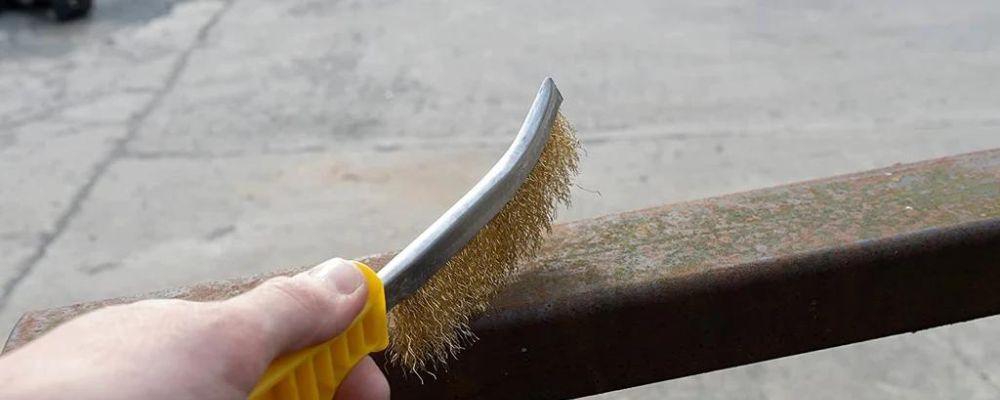
Mechanical Methods
Wire Brushing
Using a wire brush is one of the simplest and most traditional methods. It's effective for removing loose and flaky rust. This method is best for sturdy metals and surfaces where minor scratching isn't a concern. Ideal for removing loose and flaky rust. It doesn't require specialized equipment, making it accessible for most users.
Sandblasting
Sandblasting, or abrasive blasting, uses a high-pressure system to blast abrasive materials (like sand) against the rusted surface. It's very effective for removing rust from large surfaces or hard-to-reach areas but requires specialized equipment. Highly effective for thorough rust removal, especially on large or irregular surfaces. It can reach hard-to-clean areas that manual tools cannot.
Grinding
Using an angle grinder fitted with a grinding disc can remove rust quickly. It's especially effective for heavy rust on large surfaces. However, it's a method that requires care, as it can remove more material than intended and potentially alter the shape or integrity of the metal. Quick and efficient for heavy rust removal. Suitable for large surfaces and can be very precise when handled correctly.
Sanding
Sanding, either by hand or with power tools, can remove rust, especially when starting with coarse grit and moving to finer grit. It's a good option for surfaces that can tolerate some abrasiveness. Offers control over the amount of material removed, allowing for gradual rust removal. Can be used on a variety of surfaces and is effective for both light and moderate rust.
Electrolytic Rust Removal
This involves setting up an electrolytic bath, where the rusted object is submerged in an electrolyte solution and connected to a cathode, while an anode is also submerged in the solution. An electric current is passed through the solution, causing rust to dissolve away from the object. This method is effective and less abrasive but requires some setup and understanding of the process.
Ultrasonic Cleaning
This method uses ultrasonic waves in a cleaning solution to remove rust. It's particularly useful for delicate or intricate items, as the ultrasonic waves can reach into small crevices without damaging the item. Non-abrasive and preserves the integrity of the metal. Particularly effective for intricate items or items with hard-to-reach areas. Also, it's environmentally friendly, as it typically uses non-toxic electrolytes.
Needle Scalers
Needle scalers are pneumatic or electric tools that hammer away at rust and scale using multiple small needles. They are effective for removing rust from uneven surfaces. Effective for uneven or heavily corroded surfaces. The pneumatic or electric action allows for quicker and more efficient rust removal than manual methods.
Rotary Tools
Small handheld rotary tools with appropriate attachments can be used for precision rust removal, especially in small or delicate areas. Offers precision and control, ideal for small areas or detailed work. With the right attachment, it can be used for various degrees of rust removal.
Each method has unique benefits, making them suitable for different rust removal scenarios. It's important to match the method to the type of item and rust condition, ensuring the best result while preserving the integrity of the metal object. Safety should always be a priority, especially when using power tools or equipment that can generate dust or debris.
Aftercare and Preservation
Proper aftercare and preservation of metal objects after rust removal is crucial to ensure their longevity and prevent future rusting. Here are aftercare and preservation techniques.
Oil or Wax
After cleaning, applying a light coat of mineral oil, WD-40, or a specialized protective wax like Renaissance wax can create a barrier against moisture. This is especially useful for tools, mechanical parts, or any metal objects not exposed to high temperatures.
Clear Coatings
For decorative items or those exposed to the elements, clear lacquers or sealants can provide a protective coating. These coatings not only prevent rust but also preserve the item's appearance.
VCI (Volatile Corrosion Inhibitors)
For long-term storage of metal parts or tools, using VCI bags or papers can provide active rust protection. These materials release a compound that forms a protective molecular layer on the surface of the metal.
Corrosion Inhibitor Sprays
There are sprays available that can be applied directly to the metal surface to inhibit rust. These are useful for irregularly shaped objects or those with hard-to-reach areas.
Each of these aftercare and preservation steps plays a vital role in maintaining the integrity and appearance of metal objects post-rust removal. Tailoring the approach to the specific type of metal and its intended use will yield the best results in protecting your items from future rust.
Rust removal can be approached through various methods, each suited to different types of items and rust severity. Natural methods, leveraging substances like vinegar, lemon juice, baking soda, and molasses, are eco-friendly and safe, ideal for mild to moderate rust and delicate items.
Chemical methods involve specialized products like Naval Jelly, Evapo-Rust, and WD-40 Rust Remover Soak, offering powerful and efficient rust removal for more severe cases, albeit with necessary safety precautions.
Mechanical methods, including wire brushing, sandblasting, and using rotary tools, provide physical means to remove rust, effective for large surfaces and heavy rust, but often requiring more labor and equipment. Each method has its unique advantages and is chosen based on the specific rust removal needs, balancing effectiveness, safety, and the preservation of the underlying material.
-
What is the most effective natural method for removing rust?
The most effective natural method for removing rust is using a combination of white vinegar and baking soda. Soak the rusted item in white vinegar for several hours, then scrub it with a paste made from baking soda and water. This method is effective for mild to moderate rust. Vinegar's acetic acid helps to dissolve the rust, while baking soda acts as a mild abrasive to scrub it away.
-
Can rust be completely removed from metal, or does it leave permanent damage?
Whether rust can be completely removed from metal depends on the extent of the rusting and the type of metal. Surface rust can often be completely removed without leaving permanent damage. However, if rust has penetrated deeply into the metal, it may cause pitting or structural weakness, which can be irreversible. Early and thorough rust removal is key to preventing permanent damage.
-
Are chemical rust removers safe to use on all types of metals?
Not all chemical rust removers are safe for all types of metals. Some chemicals may be too harsh for certain metals, causing discoloration or further corrosion. It's important to read the product label and ensure that it is suitable for the specific type of metal you're working with. For delicate or valuable items, testing the rust remover on a small, inconspicuous area first is advisable. Always follow the safety instructions provided with the product.
Author: Will Flaiz


